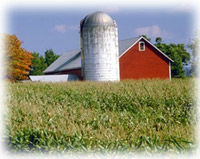
Worksheets and No Prep Teaching Resources
Reading Comprehension Worksheets
Geography

Geography
 Worksheets and No Prep Teaching Resources Reading Comprehension Worksheets Geography |
 Geography |
| edHelper's suggested reading level: | grades 4 to 6 | |
| Flesch-Kincaid grade level: | 4.67 |
|
Economy of the Midwest Region
By Trista L. Pollard |

|
 1 The Midwest Region could be called the "Land of Farms." It is one of the most important farming areas in the United States. Along with farming, the region has a huge manufacturing industry. The Midwest Region's climate and natural resources are important to its economy.
1 The Midwest Region could be called the "Land of Farms." It is one of the most important farming areas in the United States. Along with farming, the region has a huge manufacturing industry. The Midwest Region's climate and natural resources are important to its economy. |
Create Weekly Reading Books
Prepare for an entire week at once! |
| Leave your feedback on Economy of the Midwest Region (use this link if you found an error in the story) |
 |
Geography
|